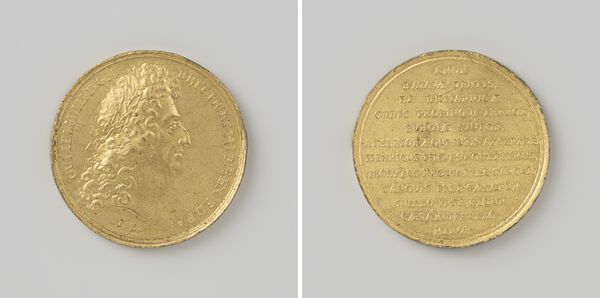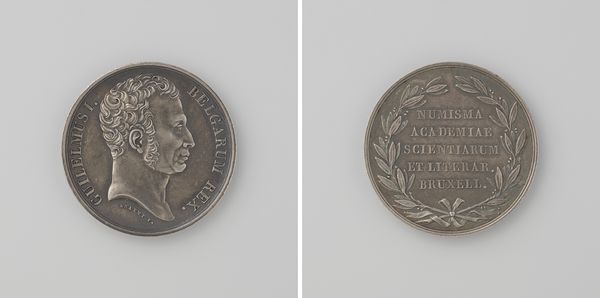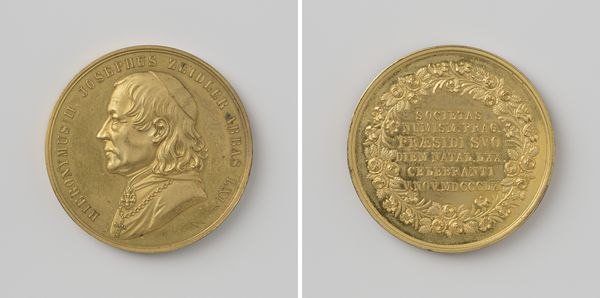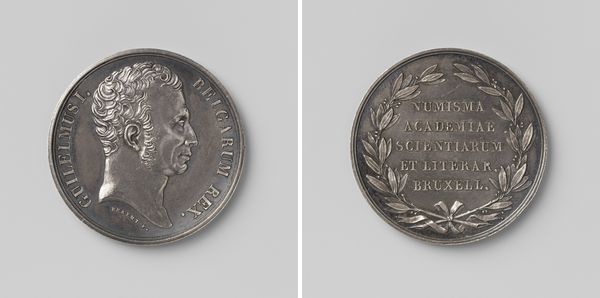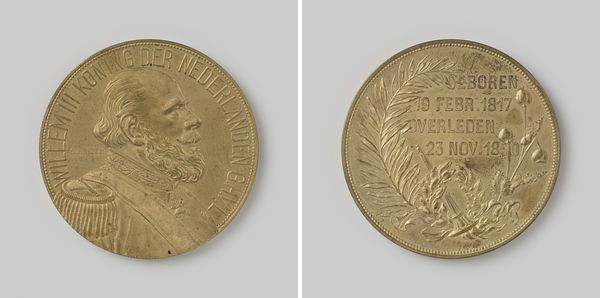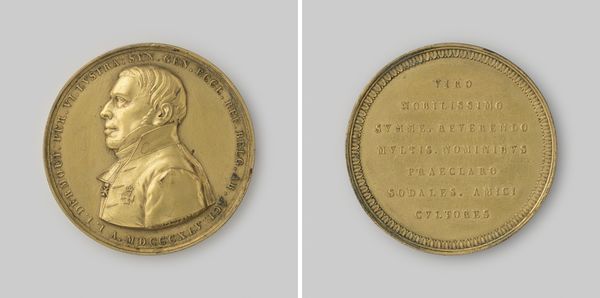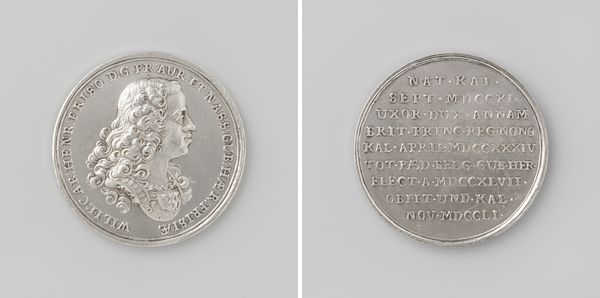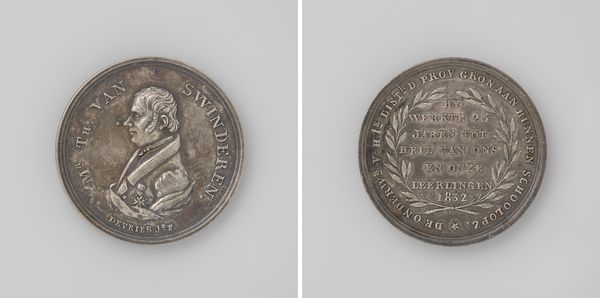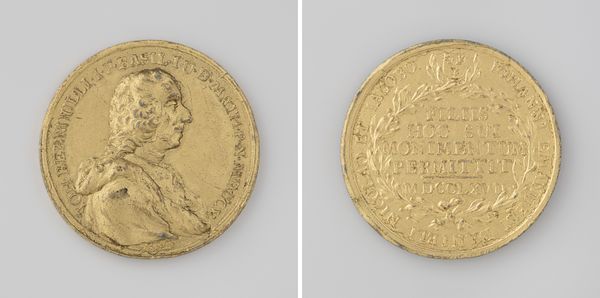
Stichting van de Koninklijke Academie van Beeldende Kunsten te Brussel, ter ere van Willem I Frederik, koning der Nederlanden, penning uitgereikt aan Ph. de Droogers 1817
metal, sculpture
portrait
medal
neoclacissism
metal
sculpture
history-painting
Dimensions: diameter 5 cm, weight 46.55 gr
Copyright: Rijks Museum: Open Domain
Curator: This striking metal piece commemorates the founding of the Royal Academy of Fine Arts in Brussels. Created in 1817 by Joseph-Pierre Braemt, it features Willem I Frederik, King of the Netherlands. Editor: The first impression is one of restrained power. The clean lines and portrait give it a formal, almost austere feel. It clearly intends to project authority. Curator: Exactly. Willem I was a key figure, of course. His image is placed on one side. Medals such as these were often presented to figures like Ph. de Droogers to commemorate such state-sponsored initiatives, embedding art academies in networks of power and patronage. Editor: So this was a symbolic act as much as it was a piece of art. It visualizes the legitimization of power through the arts. The idealized representation of Willem, rendered in Neoclassical style, also speaks to specific aesthetics the Royal Academy sought to embody. Curator: Consider too, that classical motifs, the wreath of laurels encircling the Latin text on the reverse, further connect the Academy’s establishment with notions of cultural heritage, continuity, and imperial Roman greatness. The imagery lends credibility to its cultural authority. Editor: Looking closer at the inscription "ACADEMIA REG. BRUXELLENSIS ARTIS GRAPHICAE ELEMENTIS DOCENDIS INSTITUTA. MDCCCXVII", the emphasis on graphic arts training speaks to a growing industrial culture, perhaps pointing toward a desire to manage and elevate emerging artisan skill sets within Belgium at the time. Curator: Indeed. It shows an ambition for not just high art but also applied arts education, all brought under royal patronage, which in itself carried potent symbolic value regarding state interests at this pivotal moment of Belgium’s history. Editor: It’s a dense object despite its simple design, isn’t it? Curator: Absolutely. The layering of symbolic gestures opens a portal into sociopolitical strategies behind art institutions in early 19th century Belgium. Editor: For me, this has highlighted how political iconography extends beyond conventional paintings and sculpture and influences more everyday cultural objects, which help shape popular understanding of key institutions and figures.
Comments
No comments
Be the first to comment and join the conversation on the ultimate creative platform.

